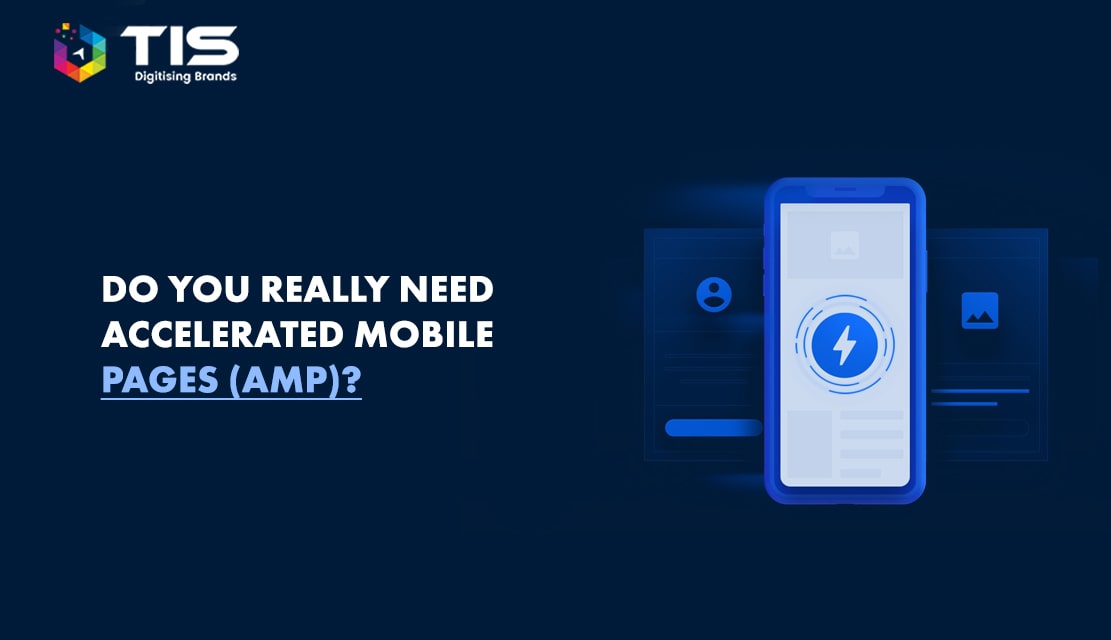
The dilemma on whether you really need the Accelerated Mobile Pages (AMP) technology for your website is normal as such puzzles arise quite often especially when one is in the deciding phase of implementation of new technology.
You might consider it an easy affair when it comes to taking such decisions. Just weigh the pros against the cons, and if the pros outweigh the cons implement the technology else discard it. But, the decision is not that simple, you need to consider a host of other aspects as well before you can arrive at a solid decision.
But before discussing whether to use AMP or not, let us first understand what it is along with the pros and cons.
AMP is an open-source framework that bears the capability of accelerating the loading speed of mobile web pages even if the pages contain heavy content, like infographics, PDFs, audio, or video files. AMP disables all the elements that retard the speed and performance of your website. The framework was developed by Google as a competitor to Facebook Instant Articles and Apple News in response to the growing usage of mobiles in internet searches.
The underlying rationale is pretty clear—to accelerate loading speeds of web pages in mobiles, as users hate slow-loading websites. And users often tend to abandon a page if it takes more than 53 seconds to load, research shows.
Technically speaking, Accelerated Mobile Pages (AMP) is built with three major components for speeding up loading mobile web pages. The components are:
It is an extension of HTML with some custom AMP properties for better as well as reliable properties. The custom elements enable easy implementation of the common tags and speed up site performance. The AMP library can be called upon as it is linked within the code itself.
With the traditionally designed pages, browsers might not be able to detect in what way the content has to be laid out until the entire code is loaded. Accelerated Mobile Pages (AMP) takes care of this aspect by ensuring that the position and the size of each element are determined within the HTML prior to the loading of the actual resources.
It is a library in which scripts are interlinked to allow only good and clean code to be used instead of bloated code to prevent slow loading times. The library enables asynchronous (parallel) loading of JavaScript instead of sequentially and that imparts speed to web page loading times.
It improves page performances by extracting and caching AMP HTML automatically and thus accelerates page load times. As preferred by Google search results, it allows web pages to be discoverable by search engines quickly.
AMP has a few characteristics:
AMP entails the remarkable benefit of providing users with a smooth and engaging browsing experience by speeding up loading times for web pages. It also delivers successful SEO campaigns by helping the corresponding websites to rank higher in search engine results.
So, with AMP, you can:
You have now understood the advantages of AMP, but do not get carried away and finalize your decision to implement the technology straight away. Wait a while as there are some drawbacks too. Let us then understand the downsides, so that figuring out whether to implement or not will become relatively easy.
The following are the main drawbacks:
Now comes the moot point: do we really need AMP? Weighing the pros against the cons, you might not be able to arrive at a concrete answer. You need to take into consideration other factors as well. And our straightforward suggestion is: to skip AMP for the time being if your website is already mobile-friendly and let the technology withstand the test of time.
If AMP cannot prove its worth, then there is also a chance of Google eventually declaring it as a failed technology. However, if you really find the technology worth implementing, then restrict from using Accelerated Mobile Pages (AMP) on all pages of your website. Use AMP in pages like blogs and critical information.
To conclude this article, I would like to say that if your website is already mobile-friendly, you can leave out the use of AMP for now because AMP has certain advantages which might be useful for your website but there are many disadvantages also due to which it is better to skip it for now.
When we talk about SEO, this technology can prove to be helpful for your SEO depending upon the nature of your business; however, it is not essential for your SEO. So, the bottom line is that if you think that this technology is useful for you, try not using it for all the pages on your website. For any expert help, feel free to connect with a professional from TIS India and we would be happy to help!